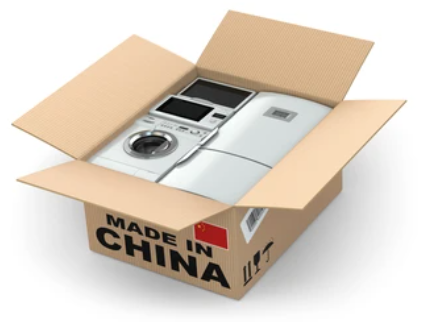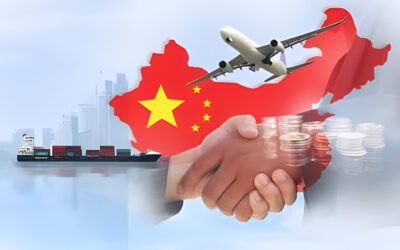Budget-Friendly Imports: Strategies for Cost Control When Importing Goods From China

Introduction
Importing goods can feel like navigating a labyrinth, but with the right strategies, you can turn this maze into a straight path. How can you ensure you’re not overspending and still getting quality products? Let’s delve into the essentials of budget-friendly importing from China. This comprehensive guide will walk you through every step, from finding reliable suppliers to managing shipping costs, ensuring you have the tools needed to control your expenses effectively.
- Understanding the Importing Process
- Identifying the Right Products
- Market Analysis
- Finding Reliable Suppliers
- Negotiating the Best Prices
- Bulk Purchases
- Payment Terms
- Managing Shipping Costs
- Choosing the Right Shipping Method
- Consolidation Services
- Understanding Duties and Taxes
- Documentation Requirements
- Hiring Customs Brokers
- Utilizing Freight Forwarders
- Benefits of Freight Forwarders
- Selecting a Freight Forwarder
- Setting Quality Standards
- Mitigating Risks
- Leveraging Technology for Cost Control
- Digital Platforms
- Inventory Management Systems
- Building Strong Supplier Relationships
- Regular Communication
- Long-Term Partnerships
- Conclusion and Final Thoughts
- FAQs
Understanding the Importing Process
Before diving into cost-saving strategies, it’s essential to understand the importing process. It involves several steps, including sourcing products, negotiating prices, shipping, customs clearance, and final delivery. Each step offers opportunities to save money if approached correctly. By comprehensively understanding each phase, you can identify where costs can be minimized and efficiencies maximized. This understanding forms the foundation upon which you can build effective cost-control strategies, ensuring you stay ahead in the competitive world of importing.
Research and Planning
Effective importing starts with thorough research and meticulous planning. This means understanding your product requirements, market demand, and potential suppliers. By investing time upfront, you can avoid costly mistakes down the line. Researching helps you identify the best products to import, understand market trends, and spot potential suppliers who offer the best value for money. Planning ensures you have a clear strategy and timeline, reducing the risk of unexpected costs and delays.
Identifying the Right Products
Choose products that have a stable demand in your market. Use tools like Google Trends and market analysis reports to gauge popularity and competition. Identifying the right products is crucial to ensure there is a consistent demand and that you can achieve good sales volume. This step requires understanding market needs and trends, ensuring that the products you choose will meet the expectations of your target customers. By selecting products wisely, you can reduce the risk of unsold inventory and enhance your profit margins.
Market Analysis
Conduct a SWOT analysis (Strengths, Weaknesses, Opportunities, Threats) for the products you’re interested in. This will help you understand potential challenges and areas where you can gain a competitive edge. Market analysis involves examining various aspects of the market environment to make informed decisions. By understanding the competitive landscape, potential risks, and opportunities, you can tailor your strategies to leverage strengths and mitigate weaknesses, ensuring a better position in the market.
Finding Reliable Suppliers
The backbone of successful importing lies in finding reliable suppliers. Websites like Alibaba, Global Sources, and Made-in-China are excellent starting points. Reliable suppliers ensure consistent quality, timely delivery, and fair pricing. It is crucial to build relationships with suppliers who are trustworthy and capable of meeting your business needs. This section will guide you on how to identify and evaluate potential suppliers to establish long-term, reliable partnerships.
Supplier Verification
Verify the legitimacy of suppliers by checking their business licenses, reading reviews, and requesting product samples. Platforms often have verification badges for trustworthy suppliers. Supplier verification is essential to avoid scams and ensure you are dealing with legitimate businesses. This step involves due diligence to confirm the supplier’s credentials, past performance, and overall reputation. By verifying suppliers, you can reduce risks and ensure smooth business operations.
Factory Visits
If possible, visiting factories can provide a clearer picture of their capabilities and quality control processes. Factory visits allow you to assess the supplier’s production facilities, quality management systems, and overall working conditions. This firsthand experience helps build trust and ensures that the supplier can meet your quality and quantity requirements. It also provides an opportunity to discuss your needs directly with the manufacturer, fostering better communication and understanding.
Negotiating the Best Prices
Negotiation is a critical skill in importing. Approach it with a clear understanding of your cost structure and desired profit margins. Effective negotiation can lead to significant cost savings and better terms. It involves understanding your supplier’s constraints and finding a mutually beneficial agreement. This section will explore strategies and tips for negotiating favorable prices without compromising on quality or service.
Bulk Purchases
Buying in bulk can significantly reduce the per-unit cost of products. However, ensure you have the storage capacity and market demand to justify large orders. Bulk purchasing leverages economies of scale, allowing you to obtain products at a lower cost per unit. It is important to balance the benefits of bulk buying with the risks of overstocking and cash flow constraints. Proper planning and market analysis can help determine the optimal order size.
Payment Terms
Negotiate favorable payment terms, such as deferred payments or discounts for early payments. This can help manage cash flow more effectively. Flexible payment terms can provide financial relief and improve liquidity. For example, negotiating longer payment periods can give you more time to sell the products and generate revenue before payment is due. Early payment discounts can also reduce overall costs if you have the cash available to take advantage of them.
Managing Shipping Costs
Shipping can be one of the largest expenses in importing. Understanding different shipping methods and their costs is crucial. Effective management of shipping costs can significantly impact your overall budget. This section will explore various shipping options, cost-saving tips, and best practices to ensure your products reach you in a cost-effective manner without compromising on delivery times or safety.
Choosing the Right Shipping Method
Options include air freight, sea freight, and courier services. Each has its own cost implications and delivery times. Sea freight is generally cheaper but slower compared to air freight. Choosing the right shipping method depends on factors such as the nature of the goods, urgency, and budget. This subsection will help you evaluate the pros and cons of each method and choose the one that best fits your needs.
Consolidation Services
Using consolidation services can help you save on shipping costs by combining multiple smaller shipments into one larger shipment. Consolidation reduces shipping costs by maximizing container space and reducing the number of individual shipments. This method is particularly beneficial for smaller orders or when importing from multiple suppliers. It can also simplify logistics and customs clearance.
Understanding Duties and Taxes
Import duties and taxes can significantly impact your overall costs. Familiarize yourself with the duty rates for your products and explore ways to minimize these charges legally. Understanding the duty and tax structure helps you budget accurately and avoid unexpected expenses. This section will provide insights into various types of duties, tax exemptions, and strategies to reduce duty costs.
Tariff Codes
Correctly classifying your products under the appropriate tariff codes can sometimes reduce duty rates. Tariff codes determine the duty rates applied to imported goods. Accurate classification is essential to ensure you are paying the correct amount. Misclassification can lead to overpayment or penalties. This subsection will guide you on how to find and use the correct tariff codes for your products.
Free Trade Agreements
Investigate if there are any free trade agreements between your country and China that might reduce or eliminate certain duties. Free trade agreements (FTAs) can provide significant duty relief for specific products. Understanding and leveraging these agreements can lower your import costs and enhance competitiveness. This section will explain how to identify and benefit from relevant FTAs.
Efficient Customs Clearance
Customs clearance can be a bottleneck if not handled properly. Ensure all your documentation is accurate and complete to avoid delays and additional costs. Efficient customs clearance ensures timely delivery and minimizes costs associated with storage and penalties. This section will cover best practices and tips for smooth customs clearance, helping you navigate this critical step.
Documentation Requirements
Common documents include commercial invoices, packing lists, and certificates of origin. Keep these documents organized and readily accessible. Accurate documentation is essential for customs clearance. Each document serves a specific purpose and must be completed correctly to avoid delays. This subsection will detail the necessary documents and how to prepare them.
Hiring Customs Brokers
Consider hiring a customs broker who can navigate the complexities of customs clearance, ensuring a smoother process. Customs brokers are experts in import regulations and procedures. They can help expedite clearance, handle paperwork, and resolve any issues that arise. This section will explain the benefits of using a customs broker and how to choose a reputable one.
Utilizing Freight Forwarders
Freight forwarders can manage logistics on your behalf, often finding more cost-effective shipping solutions and handling customs documentation. Utilizing freight forwarders can simplify the importing process and reduce costs. They provide end-to-end logistics solutions, ensuring your goods are transported efficiently. This section will explore the role of freight forwarders and how to leverage their services.
Benefits of Freight Forwarders
They provide valuable services like shipment tracking, insurance, and warehousing, which can save you time and money. Freight forwarders offer a range of services that can streamline your logistics operations. From arranging transportation to managing storage, their expertise can lead to cost savings and improved efficiency. This subsection will highlight the key benefits of using freight forwarders.
Selecting a Freight Forwarder
Choose a reputable freight forwarder with a proven track record in handling imports from China. Get quotes from multiple forwarders to compare costs and services. Selecting the right freight forwarder is crucial for smooth logistics. This section will guide you on evaluating and choosing a forwarder based on factors such as experience, reliability, and cost-effectiveness.
Quality Control and Inspection
Ensuring product quality is paramount. Implementing rigorous quality control measures can prevent costly returns and damage to your brand’s reputation. Quality control is essential to maintain customer satisfaction and avoid financial losses. This section will discuss various quality control methods and their importance in the importing process.
Third-Party Inspections
Hire third-party inspection companies to check the quality of goods before they leave the factory. This step can catch defects early and ensure compliance with your standards. Third-party inspections provide an unbiased assessment of product quality. They help identify any issues before shipping, reducing the risk of receiving substandard goods. This subsection will explain how to arrange and benefit from third-party inspections.
Setting Quality Standards
Clearly communicate your quality expectations to suppliers and include these standards in your contracts to avoid misunderstandings. Defining and enforcing quality standards is crucial for consistent product quality. This section will discuss how to set clear quality criteria and ensure suppliers adhere to them.
Mitigating Risks
Importing goods involves various risks, from product quality issues to shipping delays. Having a risk mitigation plan can save you money and headaches. Risk management is an essential aspect of importing, helping you prepare for and respond to potential issues. This section will cover strategies to identify, assess, and mitigate risks associated with importing.
Insurance
Insure your shipments to protect against loss, damage, or theft. This small cost can save you significant money if something goes wrong. Insurance provides financial protection and peace of mind. This subsection will discuss different types of insurance and how to choose the right coverage for your imports.
Contingency Plans
Develop contingency plans for potential problems, such as finding alternative suppliers or shipping routes. Contingency planning involves preparing for unforeseen events to minimize disruption. This section will guide you on creating effective contingency plans to handle various risks.
Leveraging Technology for Cost Control
Technology can streamline many aspects of the importing process, from communication with suppliers to inventory management. Leveraging technology can enhance efficiency, reduce errors, and lower costs. This section will explore various technological tools and platforms that can assist in cost control.
Digital Platforms
Use digital platforms for order tracking, payment processing, and communication. This can reduce errors and improve efficiency. Digital platforms offer a centralized solution for managing various importing tasks. This subsection will discuss how to utilize these platforms for better coordination and cost management.
Inventory Management Systems
Implement inventory management software to track stock levels, manage orders, and forecast demand. This helps prevent overstocking or stockouts, both of which can be costly. Effective inventory management is crucial for maintaining optimal stock levels and ensuring timely fulfillment. This section will explain the benefits of inventory management systems and how to implement them.
Building Strong Supplier Relationships
A strong relationship with your suppliers can lead to better terms, higher quality, and more reliable deliveries. Building strong supplier relationships is key to successful importing. This section will discuss how to foster long-term partnerships and the benefits they bring.
Regular Communication
Maintain regular communication with your suppliers to build trust and address any issues promptly. Open and consistent communication helps establish trust and ensures smooth operations. This subsection will provide tips for effective communication with suppliers.
Long-Term Partnerships
Focus on building long-term partnerships rather than one-time transactions. Long-term relationships often result in better prices and priority service. Developing long-term partnerships can lead to mutual benefits and improved cooperation. This section will explore strategies for building and maintaining strong supplier relationships.
Conclusion and Final Thoughts
Importing goods from China can be highly profitable if approached with careful planning and cost control strategies. By understanding the importing process, finding reliable suppliers, and leveraging technology, you can minimize costs and maximize your business’s potential. This final section will summarize the key points discussed and offer concluding thoughts on successful importing.
FAQs
- What are the common pitfalls when importing goods from China?
Common pitfalls include dealing with unreliable suppliers, unexpected shipping costs, and customs clearance issues. Thorough research and planning can help avoid these problems. Ensuring you have verified suppliers, understanding all cost components, and being prepared for customs procedures can mitigate these risks. - How can I verify a supplier’s credibility?
Verify a supplier’s credibility by checking their business licenses, reading reviews, requesting samples, and possibly visiting their factory. These steps help ensure you are dealing with reputable suppliers and reduce the risk of fraud or substandard products. - What is the best shipping method for cost savings?
Sea freight is generally the most cost-effective shipping method, especially for large or heavy shipments. However, it is slower compared to air freight. The choice of shipping method depends on factors like cost, speed, and the nature of the goods. - How can technology help in importing goods?
Technology can streamline processes such as order tracking, inventory management, and communication with suppliers, reducing errors and improving efficiency. Utilizing digital platforms and software solutions can enhance overall efficiency and cost-effectiveness. - Why is quality control important in importing?
Quality control ensures that the products meet your standards and prevents costly returns and damage to your brand’s reputation. Third-party inspections can help maintain high quality. Implementing strict quality checks protects your business from receiving defective goods and ensures customer satisfaction.
Recent Posts
- Budget-Friendly Imports: Strategies for Cost Control When Importing Goods From China
- Bridging Cultures: Navigating Cultural Aspects in China Imports
- Guide to working with a sourcing agent in China for startups
- How China Sourcing Agents Can Transform Your Business
- Exploring the Benefits of Collaborating with a China Sourcing Agent







Recent Comments